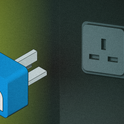The humble doorbell may seem like an unlikely candidate for the surveillance capitalism treatment. Yet here we are.
A recent episode of the BBC documentary series Panorama asked what Amazon knows about us. The answer, predictably, was that they know a lot. For them and for other tech giants, the gathering of data is always the objective. The more they know about their customers, the easier it is for them to anticipate and shape our choices.
If you take that business model into account, Amazon’s new Ring video doorbell system makes a good deal of sense. Of course, this is not simply a doorbell. Ring is a range of home security devices that allow you, as the tagline goes, to “see, hear and speak to visitors from anywhere.” As well as the doorbell, the Ring range includes additional cameras that can be placed around the home and networked together. The Amazon smart speakers provide sonic data on the audio soundscape; Ring now adds the visuals.
The central idea behind Ring is that the user can remotely monitor their property, receiving notifications when someone enters the vicinity. Once notified the resident can watch the visitor through their smartphone and speak to them through the speaker system. The user thus becomes a virtual occupant of their own home, even when they are away. The advertising largely focuses upon crime prevention: “can I help you?” one user says into their phone to deter a lurking would-be criminal. The impression is of a home that can be watched over at all times.
It is no surprise that Amazon’s product launch advert creates the image of a perfectly secure home. The devices in the Ring range, the voiceover tells us, “allow you to build a ring of security around your property in just minutes.” If some of the broader observations about the rise of insecurity and uncertainty are accurate, then the desire for this type of “ring of security” is entirely understandable. By providing a shell in a “shelless time,” to draw upon the terminology Peter Sloterdijk’s has used to describe our contemporary vulnerability, Ring presents an apparent opportunity to use technologies as a kind of antidote. In this sense, Ring might also be connected to longer trends in urban withdrawal.
The human geographer Rowland Atkinson’s work on what he has called the domestic fortress is particularly pertinent here. Atkinson has described how people seek to fortify their homes in various ways, from gated communities to panic rooms. He has pointed out that to resolve a sense of insecurity people frequently find ways to “pad the bunker” and create isolated bubbles. The Ring system could be seen as a technological extension of this fortification of the home.
This sense of security might be one way that Ring will find its way into our homes, but it will create new questions and tensions. In addition to the expected burglars, the product launch video also focuses upon a neighbour who is caught allowing their dog to use the homeowners’ lawn as a facility. Inadvertently perhaps, this is suggestive of how the cameras’ peripheral vision will look outwards onto neighbours and other passers-by. Perhaps these types of devices will move us further toward neighbourhoods that replicate the patterns we find on social media, with everybody watching everybody else.
The remote occupation of the home also opens up the potential for a range of new types of data collection. The Ring range is explicitly a set of surveillance devices for watching others, but the real question is the extent to which it will watch those who live in the home and their visitors. The products themselves are described as being for use both indoors and outdoors. In the home, it has been reported that the Ring devices are capturing motion data, doorbell presses and app usage.
Beyond this, as with the smart speaker, it is unclear exactly what other data might be harvested. In addition to the data captured by the cameras and speakers, by networking an individual with their home the mobile Ring app can be used, potentially, to capture location data and other usage data. This combination of visual and app data could be used to reveal all sorts of habits, social relations, daily rhythms, routines and practices.
Whilst playing to the classic ideals of the smart home—where our homes actively think for us—and also to a broader sense of insecurity, the video doorbell system will facilitate new types of data gathering. The tech giants are looking for opportunities to expand the range and scope of the data they hold. As with smart speakers before it, the Ring system will raise concerns about when we are inadvertently being watched or listened to in our own homes. We won't know when we are exposed to this new lens of the “data gaze,” either in our homes or as we as pass by other residencies.
Its invisibility will give it an even more powerful presence in terms of data gathering and, by potentially generating a sense of surveillance paranoia, might even contribute to our insecurities, rather than resolving them. The fact that something as humdrum as the doorbell is being transformed into a networked surveillance device tells us just how ordinary and embedded data gathering has already become.
It is tempting to be drawn-in by these imaginary future moments in which we will find ourselves covertly watch a passer-by or barking an accusatory “can I help you” through the tinny speakers, but when it comes to embedding a vast network of data extraction sensors and cameras on our doorsteps we might want to ask who it is that these systems will really be watching.












